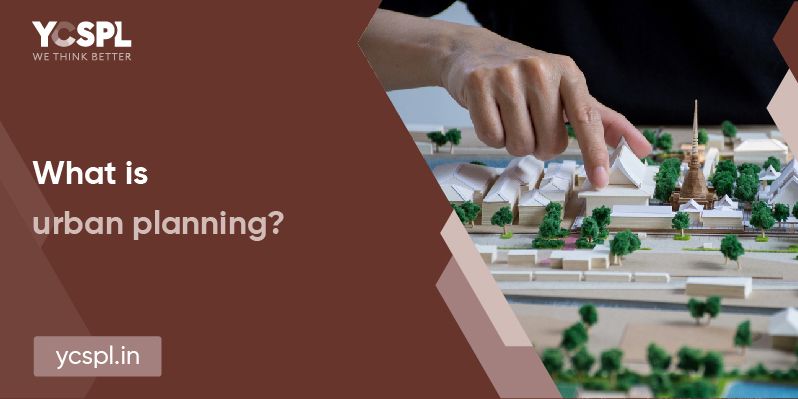
The entire humanity is rapidly progressing in almost every avenue there is. Designing environments that meet the needs and requirements of different communities and settlements are thus integral for any further development. And this is where Urban Planning plays a huge role.
Urban planning refers to the design and development of cities to meet comprehensive solutions for various requirements like transportation, communication, accessibility to resources, distribution networks, and other infrastructural needs. The primary concerns that are taken into account while planning these efforts include public welfare, ease of accessibility, and the general well-being of the citizen.
In recent times, urban planners are cautiously developing structures that are futuristic and at the same time sustainable in nature. Bridging any inequalities and socio-economic divisions within the same region is also a key focus to developing a collaborative community that functions as one.
Cities are futuristic already and for any further developmental planning, you need to arrive at time-tested solutions that will also be enough in the near future. Be it the addition of new neighborhoods or making integral developments to existing regions, meeting the goals of the requirements we might have in the future should be the key focus.
Social – Be it revitalization or expansion plans, the social fabrics that hold the city together already should be considered. The existing conditions of the communities in the region, the resources they require, and mobility solutions for easy transportation should all be considered.
Physical – The geological history of the city should be understood before the urban planners dwell on land use planning. Terrain maps should be dissected with careful GIS operations to better understand the region before making any massive plans for change.
Economic – Cities are undeniably the drivers of change and they are the potential economic powerhouse that can drive the country forward. Trends like employment, and accessibility to job opportunities, should all be considered by urban planning companies. There should also be ground floor planning that will help small businesses thrive and help drive a change forward.
Urban life is soulful and the experience of cities is one other reason why there is always a constant migration towards the same. Planning for the pedestrians will involve considerations like the wind, ground floor planning, sidewalks, and roadside parks that will keep them actively engaged with the surrounding.
The 15-minute city concept basically helps in building the entire cityscape to function as one. The idea here is to create ample opportunities in every part of the city and create local neighborhoods that run on a self-sustainable basis. All the amenities should be available within 15-minutes of walking or cycling distance in each of these neighborhoods. This will reduce complex problems like mobility accommodations for a vast majority of citizens who are forced to travel across the city for work or other requirements.
Companies like YCSPL are forward-thinking in their development ideas. Inclusivity despite the economic positions, gender, race, etc should be the heart of cities while will driving forward a community that functions as one despite their differences.
An example of inclusive development would be to have gender-neutral bathrooms in public spaces, wheelchair accessibility in areas like malls, parks, or beaches using appropriate ramps, etc
When it comes to the question ‘what is urban planning?’, the trues answer would be to create a city that will attract migrations from all the other regions. Cities should be developed for looking up to and entice people in every aspect.
There are hindrances to this like overcrowding, unaffordable housing, transit facility limitations, etc. Strategic planning should eliminate these cons of the urban regions and focus on building a better environment that is convenient and comfortable in all respects.
This is one of the crucial types of urban planning concepts since they contribute to the complete utilization planning of the regions.

The plans here should address issues that address all the infrastructural developments. You should also be focussing on preserving specific zones, limiting complete commercialization by focusing on creating open spaces for communal interactions, etc.
Land utilization is also done in stages that may be residential, commercial, municipal, or industrial.
Creating development plans for areas that are being newly transformed and building new structures on fresh lands is what master planning involves. They are vital because they set a basic framework for any neighborhood that is newly undergoing developments.
Here land owners, governmental organizations, and municipal authorities should work in collaboration to envision the requirements of the future and curate developments accordingly.
It is important that any urban planning design thoroughly pays close attention to all the existing aspects when it comes to revitalization planning.
This generally involves giving the neighborhood a fresh outlook by modifying the existing structures and building new construction.
At YCSPL, we have been handling projects of scale and have been partnering with various governmental organizations in executing impeccable urban makeovers. Our eye for detail has made us stand out in the industry for over 15 years now. Building genuinely smart and sustainable cities are our core focus.
Change becomes the most dynamic, powerful source of progress you have

